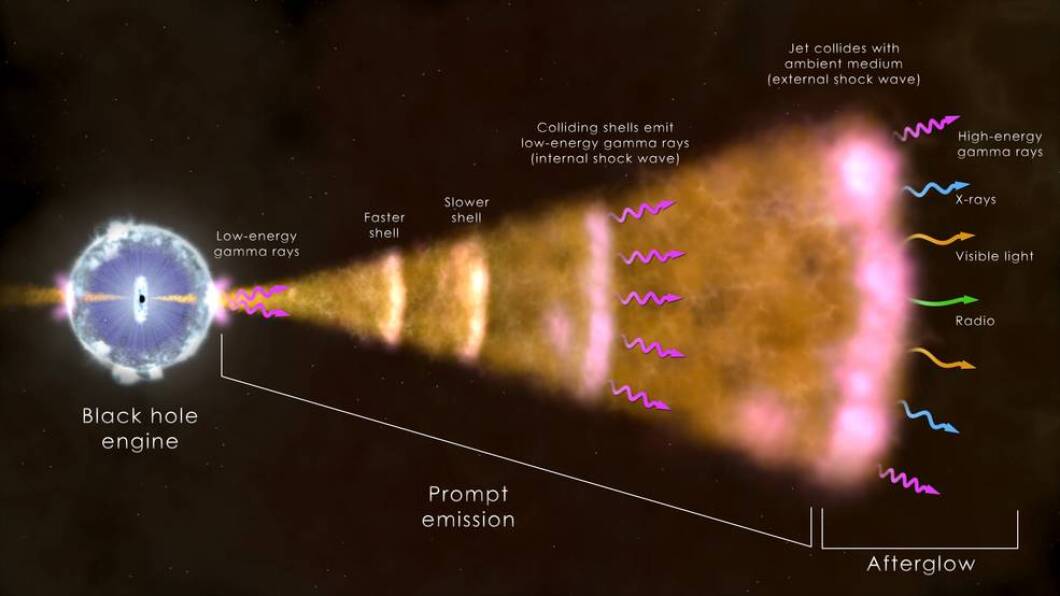
Scientists released images of what is being called the largest explosion ever in space.
The phenomenon was the result of a gamma-ray burst — the strongest and brightest explosion in the universe. The new record-holder was recorded on Oct. 9, according to NASA. It was so powerful that it effectively blinded the space instruments meant to record it. GRB 221009A occurred 1.9 billion years ago, and it was likely the result of a colossal star collapsing into a black hole.

SCIENTISTS DISCOVER COLOSSAL BLACK HOLE POINTED TOWARD EARTH
“GRB 221009A was likely the brightest burst at X-ray and gamma-ray energies to occur since human civilization began,” said Eric Burns, assistant professor of physics and astronomy at Louisiana State University.
Because the explosion blinded the instruments meant to record gamma-ray bursts, its true measurement had to be recreated by stitching together pieces of data from United States, Chinese, and Russian scientists. The final reading came in at 70 times greater than the next largest recorded space explosion.

The burst may also change how scientists understand gamma-ray bursts.
“Being so close and so bright, this burst offered us an unprecedented opportunity to gather observations of the afterglow across the electromagnetic spectrum and to test how well our models reflect what’s really happening in GRB jets,” said Kate Alexander, assistant professor in the department of astronomy at the University of Arizona.
“Twenty-five years of afterglow models that have worked very well cannot completely explain this jet. In particular, we found a new radio component we don’t fully understand. This may indicate additional structure within the jet or suggest the need to revise our models of how GRB jets interact with their surroundings.”

CLICK HERE TO READ MORE FROM THE WASHINGTON EXAMINER
The explosion was so large that scientists stress the near inability to comprehend such an outpouring of energy.
“There is nothing in human experience that comes anywhere remotely close to such an outpouring of energy,” Dr. Dan Perley of the Astrophysics Research Institute at Liverpool John Moores University told the Guardian. “Nothing.”





